Presidential reorganization authority
Presidential reorganization authority is a term used to refer to a major statutory power that has sometimes been temporarily extended by the United States Congress to the President of the United States. It permits the president to divide, consolidate, abolish, or create agencies of the U.S. federal government by presidential directive, subject to limited legislative oversight.[1] First granted in 1932, presidential reorganization authority has been extended to nine presidents on 16 separate occasions. As of 2017, it was most recently granted to Ronald Reagan.
 |
|---|
| This article is part of a series on the politics and government of the United States |
|
|
|
|
|
|
|
|
Presidential reorganization authority is designed to allow periodic refinement of the organizational efficiency of the government through significant and sweeping modifications to its architecture that might otherwise be too substantial to realistically implement through a parliamentary process.
Background
Overview
The customary method by which agencies of the United States government are created, abolished, consolidated, or divided is through an act of Congress.[2] The presidential reorganization authority essentially delegates these powers to the president for a defined period of time, permitting him to take those actions by decree.[3] A method of limited oversight has generally been included in past cases of presidential reorganization authority; usually, reorganization plans issued pursuant to the authority can be nullified by an act of Congress during a fixed window of time following promulgation of the orders.[3] In other words, should Congress take no action in response to an reorganization plan issued under the authority, then the plan becomes law. This is different from the normal process of lawmaking in which laws take effect with congressional action, not in the absence of action, and has been colloquially called the "legislative veto".[4][5]
During World War II, special reorganization authority was granted to Franklin Roosevelt. However, these powers differed from what is generally considered to be presidential reorganization authority as all structural changes undertaken were to revert following the conclusion of the war.[3]
Purpose
Presidential reorganization authority is designed to allow periodic refinement of the organizational efficiency of the government through significant and sweeping modifications to its architecture that might otherwise be too substantial to realistically implement through a parliamentary process.[4][6][7]
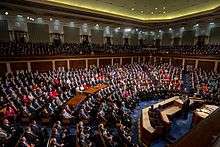
Legal basis
The U.S. Constitution establishes an Executive Branch of government, It is, therefore, left to normal statute law to establish inferior offices and agencies, under the President, by which the government can operate.
Despite the broad authority granted by the United States Constitution to the president, he does not have "unilateral and unrestrained authority over the Executive Branch" and "congressional action is required to create Executive Branch departments, to fund them, to determine the nature and scope of their duties and to confirm the appointment of their top leaders".[2] While the president manages the conduct of executive branch offices, "it is Congress, not the President, that establishes departments and agencies, and to whatever degree it chooses, the internal organization of agencies".[8]
Delegation of legislative authority
The nondelegation doctrine is a principle that the Congress, being vested with "all legislative powers" by Article One, Section 1 of the United States Constitution, cannot delegate that power to anyone else. However, the Supreme Court ruled in J. W. Hampton, Jr. & Co. v. United States (1928)[9] that congressional delegation of legislative authority is an implied power of Congress that is constitutional so long as Congress provides an "intelligible principle" to guide the executive branch: "'In determining what Congress may do in seeking assistance from another branch, the extent and character of that assistance must be fixed according to common sense and the inherent necessities of the government co-ordination.' So long as Congress 'shall lay down by legislative act an intelligible principle to which the person or body authorized to [exercise the delegated authority] is directed to conform, such legislative action is not a forbidden delegation of legislative power.'"[10]
Unicameral legislative veto
A unicameral legislative veto has been a feature of the oversight authority built into several instances of presidential reorganization authority. United States Attorney-General William D. Mitchell early expressed concern that the Economy Act of 1932, the first instance of presidential reorganization authority, was unconstitutional on the basis of it allowing the exercise of the so-called "legislative veto" by only one chamber of Congress. The act provided that either the Senate or the House of Representatives could annul an executive order issued by the president under the reorganization authority. In Mitchell's view, a single chamber of Congress was constitutionally incompetent to act by itself; the legislative power could only be exercised by the two chambers jointly, he argued.[5] The question was not immediately tested in court. However, in the 1983 case of Immigration and Naturalization Service v. Chadha the U.S. Supreme Court essentially affirmed Mitchell's earlier opinion that a one-house legislative veto was unconstitutional.[5][11] The decision in Immigration and Naturalization Service v. Chadha created the possibility that every previous reorganization was effectively null and void; to avoid the potential administrative chaos that might have ensued, Congress enacted legislation retroactively approving all previous reorganizations.[3]
History
The creation of presidential reorganization authority was foreshadowed with the passage of the Overman Act in 1918, which allowed the president to consolidate government agencies, though abolishing any specific department was prohibited.[6] First fully extended in 1932, presidential reorganization authority has been authorized on 16 occasions.[3] The Reorganization Act of 1949 was the last full statute enacted from scratch until the Reorganization Act of 1977; reorganizations occurring between the 1949 and 1977 statutes took the form of amendment and extension of the 1949 law.[3]
The Reorganization Act of 1939 defined the reorganization plan as its own kind of presidential directive. Previously, the delegated authority had been exercised using executive orders.[12]
As of 2017, the last major reorganization of the government using presidential reorganization authority was during the administration of Dwight Eisenhower. All subsequent cases of the invocation of presidential reorganization authority has been to make more minor, corrective adjustments.[13]
| President | Congress | Authorizing legislation | Time limit | Oversight procedure | Notes | References |
|---|---|---|---|---|---|---|
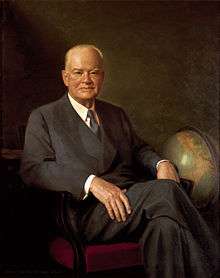 Herbert Hoover | 72nd United States Congress | Economy Act of 1932 (47 Stat. 413) | eight months | Executive orders issued under the act could be nullified by a "resolution of disapproval" enacted by either chamber of Congress within 60 days of the date of the order. | The Economy Act of 1932 was passed in response to Hoover's frustration at the lack of cooperation from Congress in refining aspects of the administrative structure of the government and his concern that any proposal he advanced would be "amended beyond recognition". Hoover issued 11 executive orders under the Economy Act of 1932 on December 9, 1932. All were nullified by resolutions of disapproval on January 19, 1933. | [3][5] |
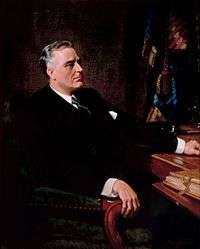 Franklin Roosevelt | 73rd United States Congress | Amendments of 1933 to the Economy Act of 1932 (47 Stat. 1517; 48 Stat. 8) | two years | none | The amendments to the Economy Act granting presidential reorganization authority to Franklin Roosevelt were made at the urging of Herbert Hoover before he left office. In contrast to the original legislation, however, the reorganization authority granted by the 73rd Congress "all but eliminated the ability of Congress to prevent such orders from taking effect" short of enacting a new law. Roosevelt used the authority to create the Office of National Parks, Buildings, and Reservations in the United States Department of the Interior; abolish the United States Shipping Board; merge the Bureau of Immigration and Bureau of Naturalization into the Immigration and Naturalization Service; abolish the Board of Indian Commissioners, transferring its authority to the U.S. Department of the Interior; and consolidate several disparate government farm credit agencies into the Farm Credit Administration. | [3][5] |
 Franklin Roosevelt | 76th United States Congress | Reorganization Act of 1939 (53 Stat. 561) | two years | Reorganization plans issued under the act could be nullified by a concurrent resolution enacted by both chambers of Congress within 60 days of the date of the order. | Roosevelt's Reorganization Plan No. 1 and Reorganization Plan No. 2 substantially reorganized a number of federal agencies. It created the Federal Security Agency, bringing together the Social Security Board, U.S. Employment Service, Office of Education, Public Health Service, National Youth Administration, and Civilian Conservation Corps; created the Federal Works Agency, bringing together the Bureau of Public Roads, Public Buildings Branch of the Procurement Division, Branch of Buildings Management of the National Park Service, United States Housing Authority, Federal Emergency Administration of Public Works, and Works Progress Administration; and created the Federal Loan Agency, bringing together the Reconstruction Finance Corporation, the Electric Home and Farm Authority, Federal Home Loan Bank Board, Federal Housing Administration, and Export-Import Bank of the United States. The plan also transferred the Farm Credit Administration, Federal Farm Mortgage Corporation, and Commodity Credit Corporation to the United States Department of Agriculture. One later criticism of Roosevelt's actions is that they further reduced the influence and capacity of the Cabinet. | [14][15][3] |
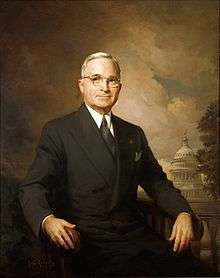 Harry Truman | 79th United States Congress | Reorganization Act of 1945 (59 Stat. 613) | two years | Reorganization plans issued under the act could be nullified by a concurrent resolution enacted by both chambers of Congress within 60 days of the date of the order. | Truman used his power under the Reorganization Act of 1945 to restructure some federal housing agencies. Proposals to restructure the U.S. Department of Labor were nullified by Congress. | [3] |
 Harry Truman | 81st United States Congress | Reorganization Act of 1949 | four years | Reorganization plans issued under the act could be nullified by a concurrent resolution enacted by both chambers of Congress within 60 days of the date of the order. | Truman used the Reorganization Act of 1949 to implement the recommendations of the Commission on Organization of the Executive Branch of the Government, which was chaired by former president Herbert Hoover. While most of the commission's program was ultimately implemented, eleven of the 41 reorganization plans issued by Truman to carry out the reorganization were nullified by Congress. | [3] |
 Dwight Eisenhower | 83rd United States Congress | Amendments of 1953 to the Reorganization Act of 1949 | two years | Reorganization plans issued under the act could be nullified by a concurrent resolution enacted by both chambers of Congress within 60 days of the date of the order. | In 1953, Eisenhower created the Department of Health, Education and Welfare under the orders of his Reorganization Plan No. 1. | [3] |
 Dwight Eisenhower | 84th United States Congress | Amendments of 1955 to the Reorganization Act of 1949 | two years | - | Congress disapproved Eisenhower's plans to reorganize the research and development programs of the Department of Defense and to make the Federal Savings and Loan Insurance Corporation independent of the Federal Home Loan Bank Board. | [3] |
 Dwight Eisenhower | 85th United States Congress | Amendments of 1957 to the Reorganization Act of 1949 | two years | - | - | [3] |
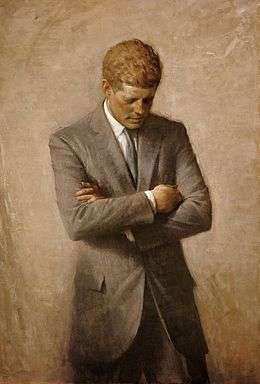 John F. Kennedy | 87th United States Congress | Amendments of 1961 to the Reorganization Act of 1949 | two years | - | Under Kennedy's Reorganization Plan No. 2 of 1962, the Office of Science and Technology in the Executive Office of the President was created. His Reorganization Plans No. 1 and No. 2 of 1961, effecting the authority of the Securities and Exchange Commission and Federal Communications Commission, were disapproved by Congress. | [3] |
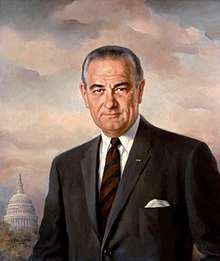 Lyndon Johnson | 88th United States Congress | Amendments of 1963 to the Reorganization Act of 1949 | one year | - | - | [3] |
 Lyndon Johnson | 89th United States Congress | Amendments of 1965 to the Reorganization Act of 1949 | three and one-half years | - | - | [3] |
 Richard Nixon | 91st United States Congress | Amendments of 1969 to the Reorganization Act of 1949 | one and one-half years | - | Nixon used his reorganization authority under the 1969 amendments to establish the National Oceanic and Atmospheric Administration and the Environmental Protection Agency under his Reorganization Plan No. 3. | [3] |
 Richard Nixon | 92nd United States Congress | Amendments of 1971 to the Reorganization Act of 1949 | one and one-half years | - | - | [3] |
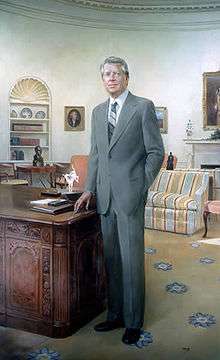 Jimmy Carter | 95th United States Congress | Reorganization Act of 1977 | three years | - | The Reorganization Act of 1977, originally intended to be a further series of amendments to extend the Act of 1949, ultimately materialized as its own statute. Carter used his authority under the act to create the Office of Personnel Management, the Merit Systems Protection Board, and the Federal Labor Relations Authority. A plan to create a Department of Natural Resources was ultimately never enacted after it became clear the proposal was likely to be disapproved by Congress. The proposed new department would have renamed the Department of the Interior and transferred into it the U.S. Forest Service from the U.S. Department of Agriculture. | [3] |
 Ronald Reagan | 96th United States Congress | Amendments of 1980 to the Reorganization Act of 1977 | one year | Reorganization plans would take effect 90 days after promulgation provided that they were forwarded to Congress while it was in session and that, (a) each chamber of the Congress adopted a resolution approving the plan, or, (b) one chamber of the Congress adopted a resolution approving the plan while the second chamber neither approved nor disapproved, (c) neither chamber took any action on the matter. | - | [3] |
 Ronald Reagan | 98th United States Congress | Amendments of 1984 to the Reorganization Act of 1977 | two months | Reorganization plans would take effect 90 days after promulgation provided that they were forwarded to Congress while it was in session and that, (a) each chamber of the Congress adopted a resolution approving the plan, or, (b) one chamber of the Congress adopted a resolution approving the plan while the second chamber neither approved nor disapproved, (c) neither chamber took any action on the matter. | The United States Senate adjourned sine die immediately after extending reorganization authority to Reagan and did not reconvene until the two-month time-limit had almost passed. Because of the requirement that reorganization plans had to be forwarded to the Congress while it was in session, Reagan was unable to conduct any reorganization. | [3] |
Unauthorized requests
In 2002 George W. Bush requested the president be granted permanent reorganization authority. No such authorization was extended.[7]
During the presidency of Barack Obama, Obama requested reorganization authority from Congress which he said he would use to restructure the Department of Commerce, followed by less specific modifications to other agencies. Under Obama's plan, the National Oceanic and Atmospheric Administration would have been transferred to the Department of the Interior while the rest of the Department of Commerce would be merged with the Small Business Administration and the Office of the U.S. Trade Representative, and renamed.[16] The authorization was not granted.[17]
Proposals
In 2002 the National Commission on the Public Service proposed extending presidential reorganization authority to substantially restructure the executive branch which, it contended, had become incoherent in the level of overlapping jurisdiction and different management structures.[13][7]
Paul Miller has proposed a plan for reorganization of the Executive Branch which would require presidential reorganization authority. Under Miller's proposal the U.S. Department of Health and Human Services, U.S. Department of Housing and Urban Development, U.S. Department of Veterans Affairs, Railroad Retirement Board, Supplemental Nutrition Assistance Program, Social Security Administration, National Council on Disability, and Pension Benefit Guarantee Corporation would be merged into a Department of Public Assistance. The commission also called for the creation of a Department of Economic Policy and a Department of Natural Resources created from the merger of other cabinet departments and independent agencies, and the creation of an entity called the United States Police that would merge the Federal Bureau of Investigation, the Drug Enforcement Administration, the Bureau of Alcohol, Tobacco, Firearms, and Explosives, the U.S. Marshals Service, the Federal Protective Service, the Pentagon Police, and some other minor federal law enforcement agencies.[7]
Notes
References
- Relyea, Harold C. (26 November 2008). "Presidential Directives: Background and Overview" (PDF). Congressional Research Service. pp. 13–14. Order Code 98-611 GOV.
- Kelley, Colleen. "What authority the President should have to reorganize the federal government". NTEU. National Treasury Employees Union. Retrieved March 10, 2017.
- Hogue, Henry (December 11, 2012). "Presidential Reorganization Authority: History, Recent Initiatives, and Options for Congress" (PDF). Federation of American Scientists. Congressional Research Service. Retrieved March 10, 2017.CS1 maint: ref=harv (link)
- Rosenbaum, David (March 2, 1977). "Rep. Brooks Assails Reorganization Plan". New York Times. Retrieved March 10, 2017.
- Fisher, Louis (1993). "The Legislative Veto: Invalidated, It Survives". Law and Contemporary Problems. 56 (4): 277–279. Retrieved March 10, 2017.
- Karl, Barry (1977). "Executive Reorganization and Presidential Power". Supreme Court Review: 3, 29. JSTOR 3109506.
- Miller, Paul (January 29, 2014). "In Praise of Simple Government". The Federalist. Retrieved March 10, 2017.
- Moe, Ronald. "The President's Reorganization Authority: Review and Analysis". congressionalresearch.com. Congressional Research Service. Retrieved March 10, 2017.
- "J. W. Hampton, Jr. & Co. v. United States". Justia US Supreme Court Center. April 9, 1928. 276 U.S. 394 (1928). Retrieved 2012-03-29.
- Mistretta v. United States (1989), citing J. W. Hampton, Jr. & Co. v. United States, 276 U.S. 394, 406, 48 S.Ct. 348, 351(1928)
- Walker, David. "Balancing Executive and Congressional Roles in Shaping the Federal Government's Structure" (PDF). GAO. Government Accountability Office. Retrieved March 10, 2017.
- Hogue 2012, p. 12.
- "Urgent Business for America" (PDF). Brookings Institution. National Commission on Public Service. Retrieved March 10, 2017.
- "Message to Congress on the Reorganization Act." April 25, 1939. John T. Woolley and Gerhard Peters. The American Presidency Project. Santa Barbara, Calif.: University of California (hosted), Gerhard Peters (database).
- Schlesinger, Jr., Arthur M. The Imperial Presidency. Reprint ed. New York: Houghton Mifflin Harcourt, 2004. ISBN 0-618-42001-0; Price, Don Krasher. America's Unwritten Constitution: Science, Religion, and Political Responsibility. Reprint ed. Cambridge, Mass.: Harvard University Press, 1985. ISBN 0-674-03142-3
- Dennis, Steven (January 13, 2012). "President Seeks Consolidation Authority to Reorganize Departments". Roll Call. Retrieved March 10, 2017.
- Pianin, Eric (February 20, 2013). "Why Obama's Pitch for Government Reform Hit a Wall". The Fiscal Times. Retrieved March 13, 2017.